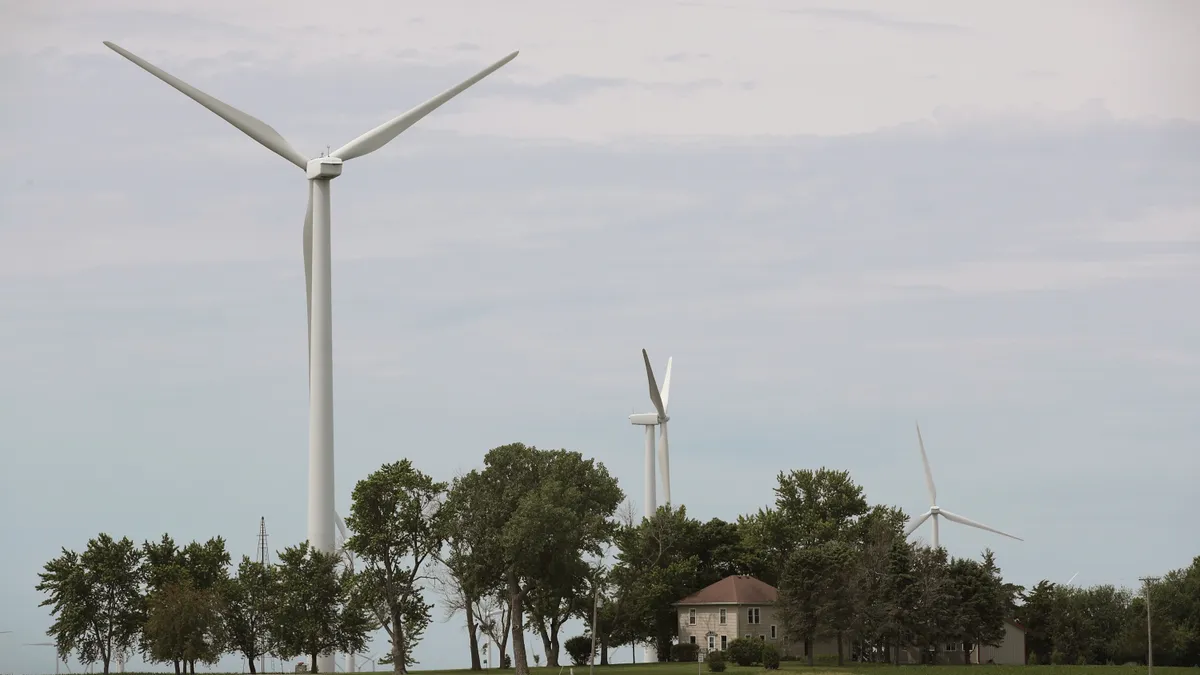The following is a contributed article by all members of the PJM Cities and Communities Coalition, which includes Alexandria, Va.; Arlington County, Va.; Charlottesville, Va.; Chicago, Ill.; Cincinnati, Ohio; Newark, N.J.; Philadelphia, Pa.; Pittsburgh, Pa.; Richmond, Va.; and Washington, D.C.
This is the year for urgent action on climate change, and federal energy regulators have a decision to make this month that is critical to the success of climate efforts that our cities and communities are leading.
The Federal Energy Regulatory Commission is considering what to do about the Minimum Offer Price Rule (MOPR), an obscure but important regulatory rule that affects the price consumers in our cities and communities pay for electricity. FERC's decision on the MOPR will help determine whether the climate policies we have supported will succeed in delivering clean energy to our residents to help forestall climate change and reduce energy costs. For our climate efforts to succeed, FERC must approve grid operator PJM Interconnection's plan to mostly undo MOPR's threat to state and local clean energy goals.
We've all seen and experienced the extreme storms, weeks of soaring temperatures, and dangerous wildfires across the U.S. over the past few years — driven by the changing climate. This year, drought and wildfire all summer in the West and upper Midwest have brought dangerous levels of smoke and haze to residents across states to the East. There was the crippling deep freeze in Texas in February, which left thousands of residents without heat for days in freezing conditions. Most recently, devastating rains and flooding and winds from Hurricane Ida stretched from the Gulf Coast to the Northeast, leading to an estimated $95 billion in negative economic impacts and at least 45 deaths in and near our communities.
It's our responsibility as local governments to ensure that our communities are prepared and resilient to these destructive and life-threatening climate impacts. We know the conditions we're seeing now are, sadly, too late to undo and will be the new normal. But we also know that the worst-case scenarios in the recent IPCC report can still be averted with a fast and just transition toward a clean energy future.
That's why local jurisdictions across the country, including ours, have adopted ambitious clean energy goals and are leading efforts to mitigate and make our communities more resilient to climate impacts.
The challenge is that the transition to a clean energy economy involves a complex ecosystem, where the devil is in the details that are typically far from public view. It's this opaque machinery where special interest influence can do its worst, and the story of the MOPR has been a case in point.
Owners of fossil fuel power plants in PJM's 13-state Mid-Atlantic and Ohio Valley region started their push to abuse the MOPR several years ago as a tool to obstruct state and local policies favoring clean energy. With more and more states and cities in the region prioritizing solar, wind and energy efficiency, fossil fuel plant owners sought to protect their revenues by reducing competition from clean energy sources in PJM's wholesale capacity market, the market where sources compete to meet future energy needs. In December 2019, FERC obliged them with its MOPR order, effectively blocking access to PJM's capacity market for new clean energy that state and local governments are supporting, and increasing costs for our residents, who must pay for the MOPR's subsidies to more expensive and dirtier energy sources.
If it is allowed to stand, the MOPR will do its worst in the years ahead as it puts a penalty on more and more clean energy sources, which otherwise produce some of the cheapest energy in the market. The result will be higher costs for residents in our communities who will pay for unnecessary and redundant capacity from gas and coal plants. Latest estimates have projected the MOPR will cost customers more than $2 billion a year by 2025 across the PJM region. For cities, the MOPR will limit our ability to procure clean energy power purchase agreements, a key strategy to meet our carbon reduction goals. Cutting off clean energy from the capacity market will lead to fewer clean energy projects.
For our cities and communities, the transition to clean energy is a matter of climate action, it's a matter of economic development, and it's a matter of justice and equity. In the PJM region, our low-income Black residents face the highest risk of death from the fine particulate pollution from fossil fuel power plants. Cities and communities should be free to express our clean energy interests, and the most impactful way we can do that is as power buyers. Our local energy preferences should be enabled by PJM and its markets, not overridden by schemes like the MOPR.
We recognize good leadership when we see it. Since January, new leadership at FERC has been responsive to local and state governments by encouraging PJM action, and PJM and its Board developed and approved an effective proposal to unwind the MOPR's threat to state and local renewable energy procurement.
Now the decision is back to FERC's doorstep, with a ruling due by September 28. With renewed alignment at the federal level — and the favorable economics of clean energy — we're more optimistic than ever. We're at the precipice of significant progress. Our cities and communities are looking to federal energy leaders to stay strong: approve PJM's plan to unwind the MOPR bailout for fossil fuels. Equitable climate action depends on it.





















